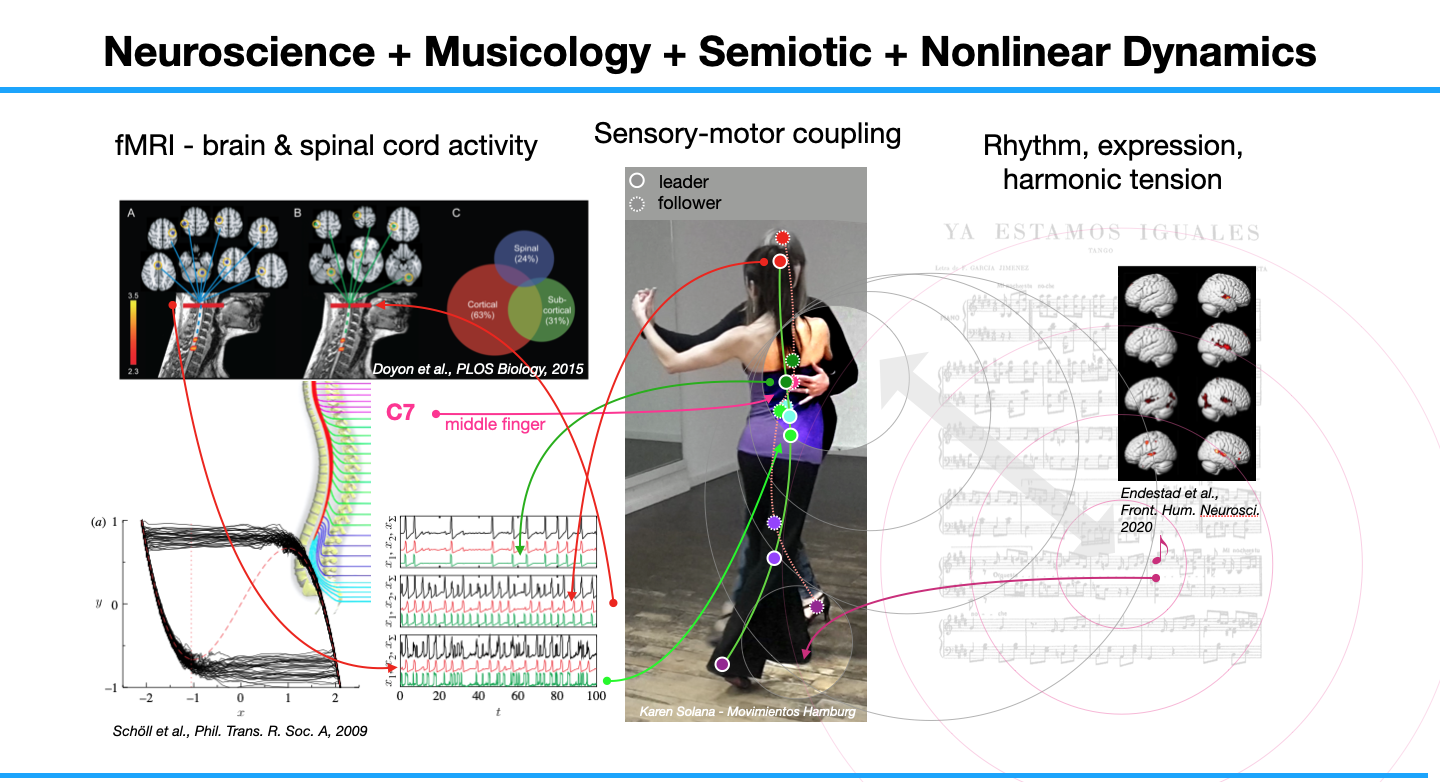Sound-Motion-Objects
Individual or Universal Parameters of Body Language and Movement
Thinking of body languages and their relation between music and dance is a field of tension which is very complex. This mind map might gives a first impression. Music, Effort, Perception, Rhythm, Movement, Balance,Cognition, Awareness, Expression, Emotion, ... , there is no doubt that one enters a multi-modal context.
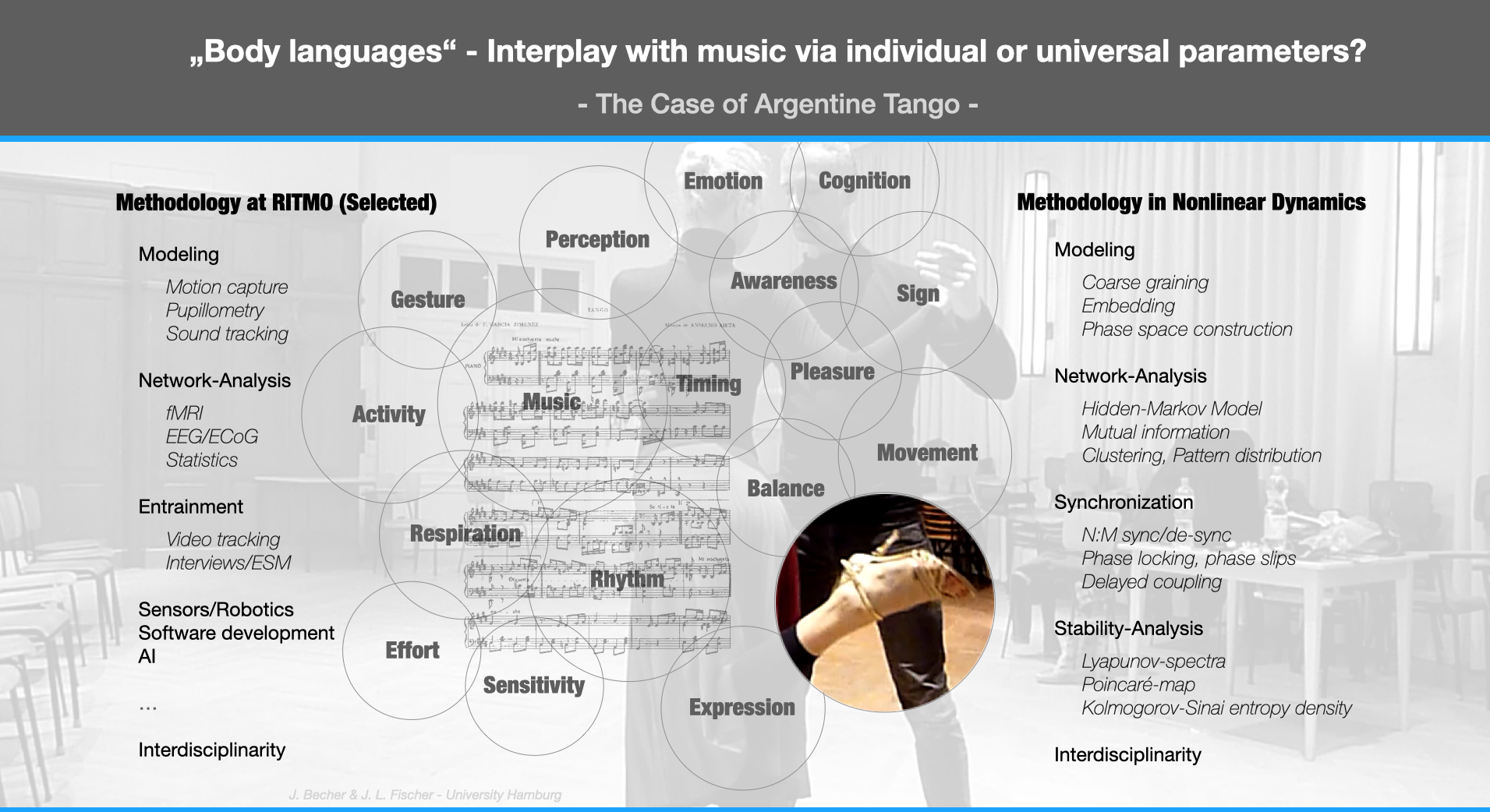
With coarse graining it is possible to transform complex systems into phase space representations. This allows to study the dynamics detached from properties that do not contribute.
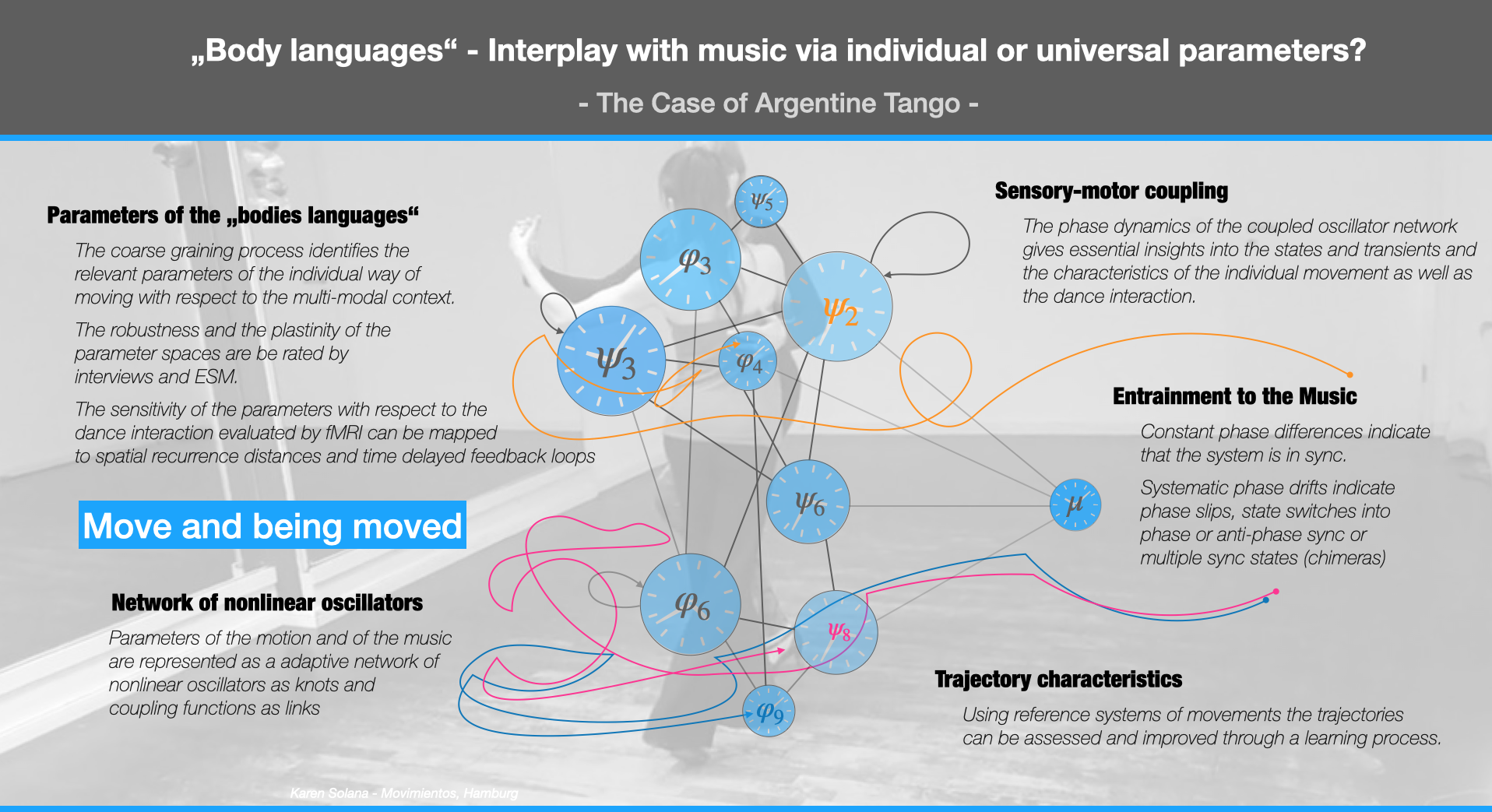
Network and Stability-Analysis help to find adequate model structures. With Hidden-Markov-models we are able to identify minimal training efforts and optimal learning pathes. In addition, interviews are a powerful instrument to control the modeling process.
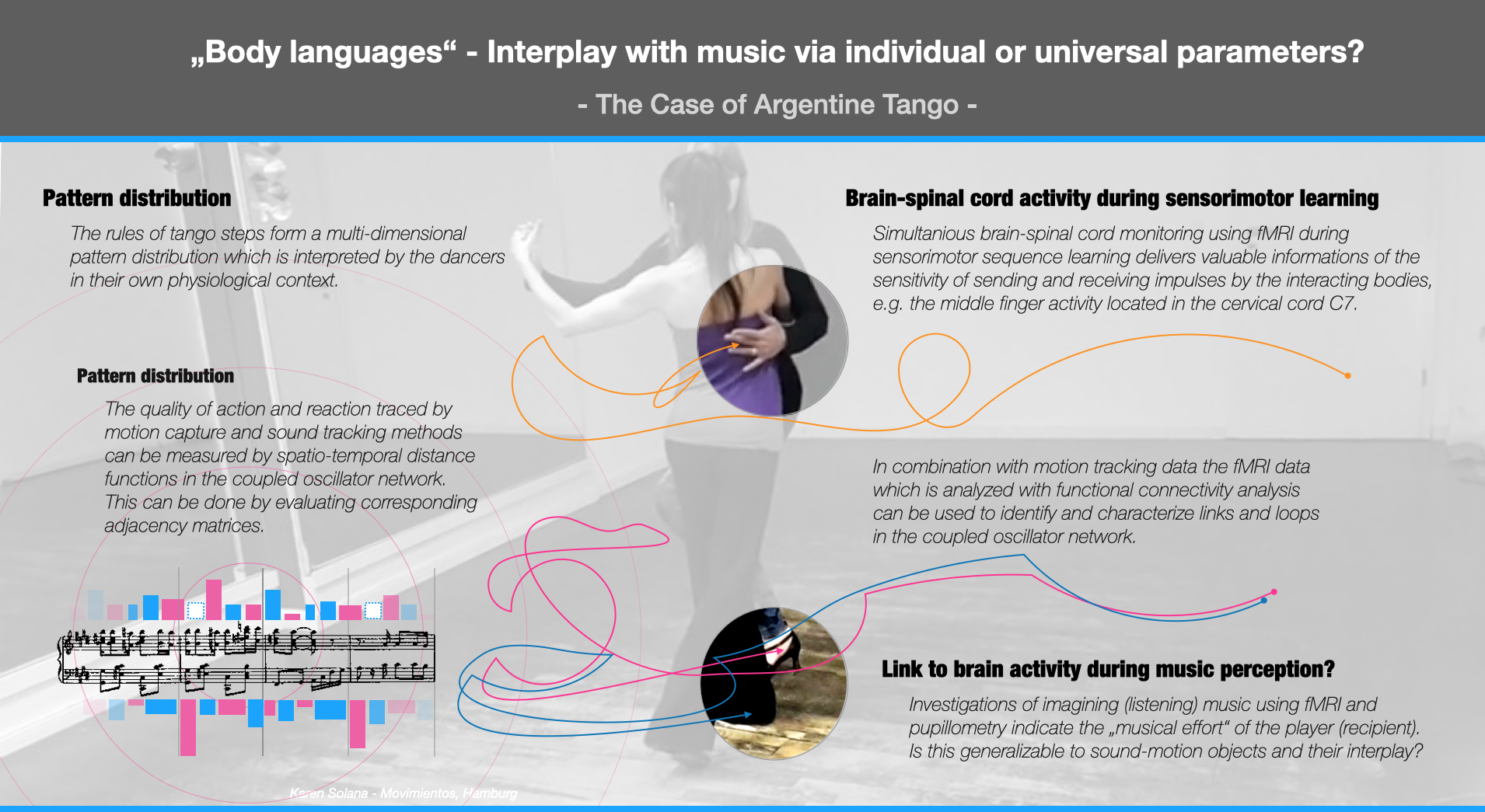
Phenomenona of entrainment are well-studied in nonlinear dynamics. This interesting phenomenon, which is called synchronization in physics, can only occur in nonlinear systems! It is characterized by phase locking and phase transitions.
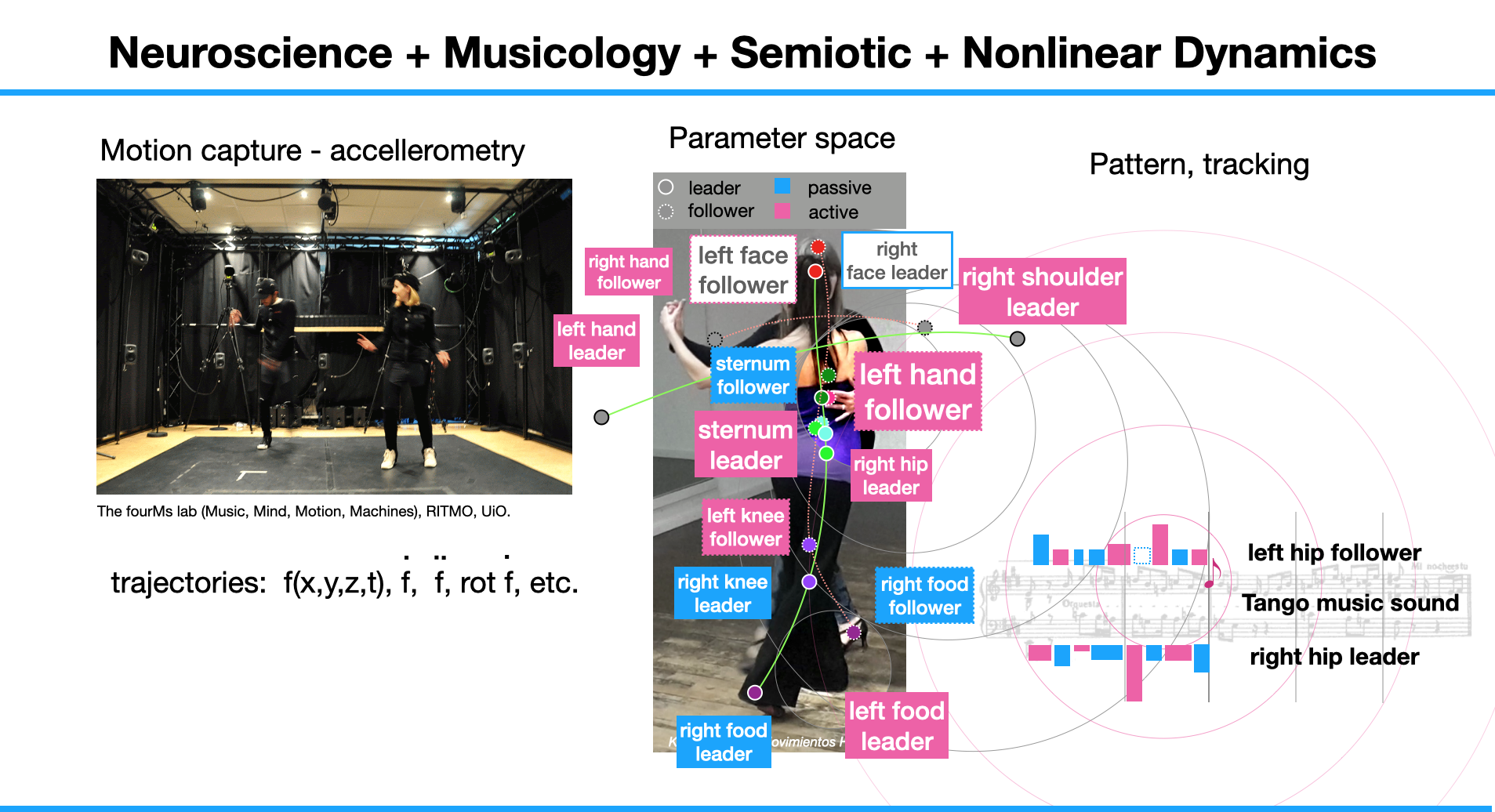
To dicover the sensori-motor learning we utilize fMRI data of brain (LC) and spinal cord activity (C7), motion capture data of dance movement manifolds and sound tracking. This is being accompanied by interviewing and experience sampling (ESM). The transformation into a corresponding coupled phase model helps to find hidden parameters which control the interaction - or - in the best case: which lead to synchronization - one of the secret pleasures of moving and being moved.
